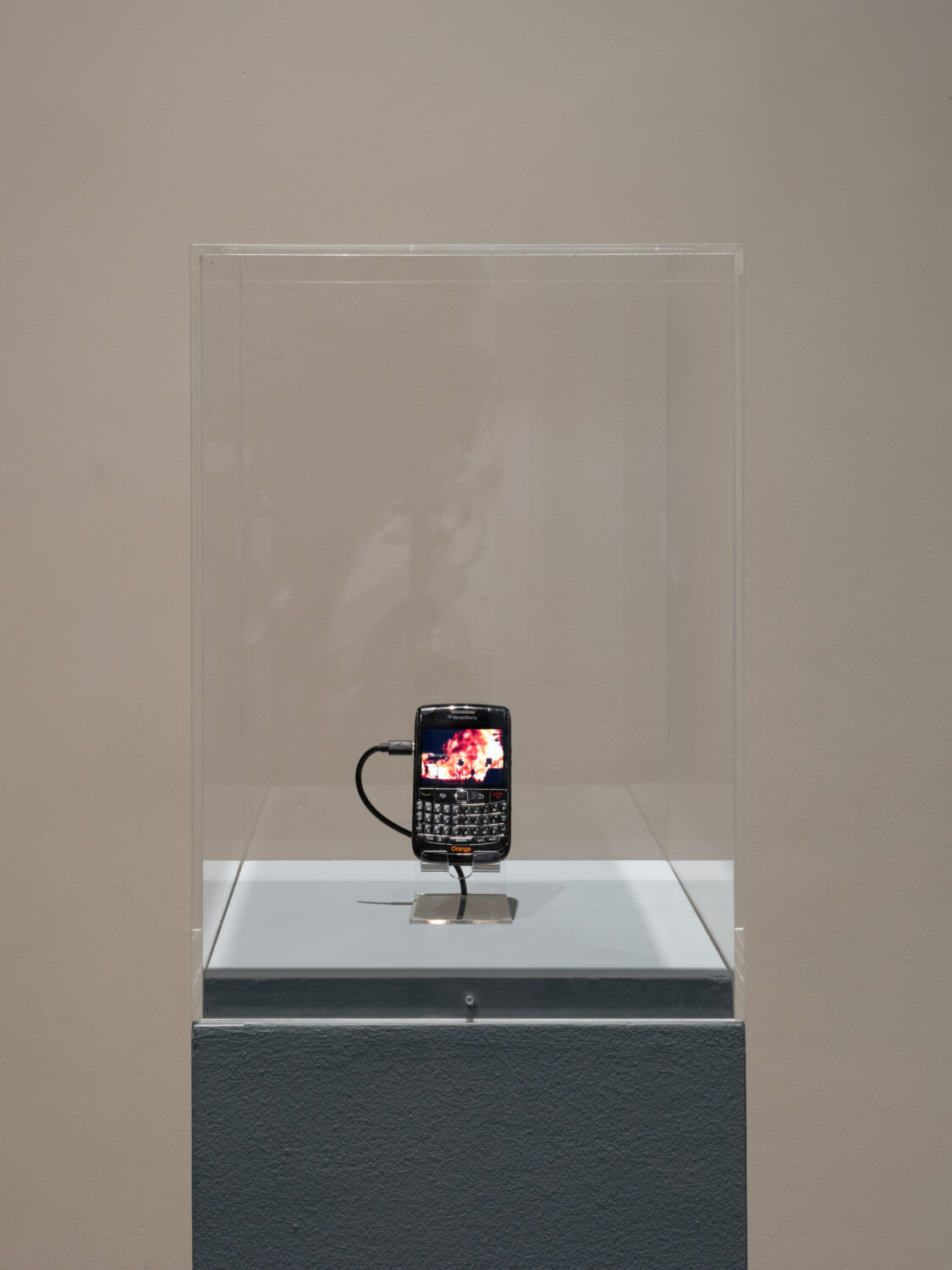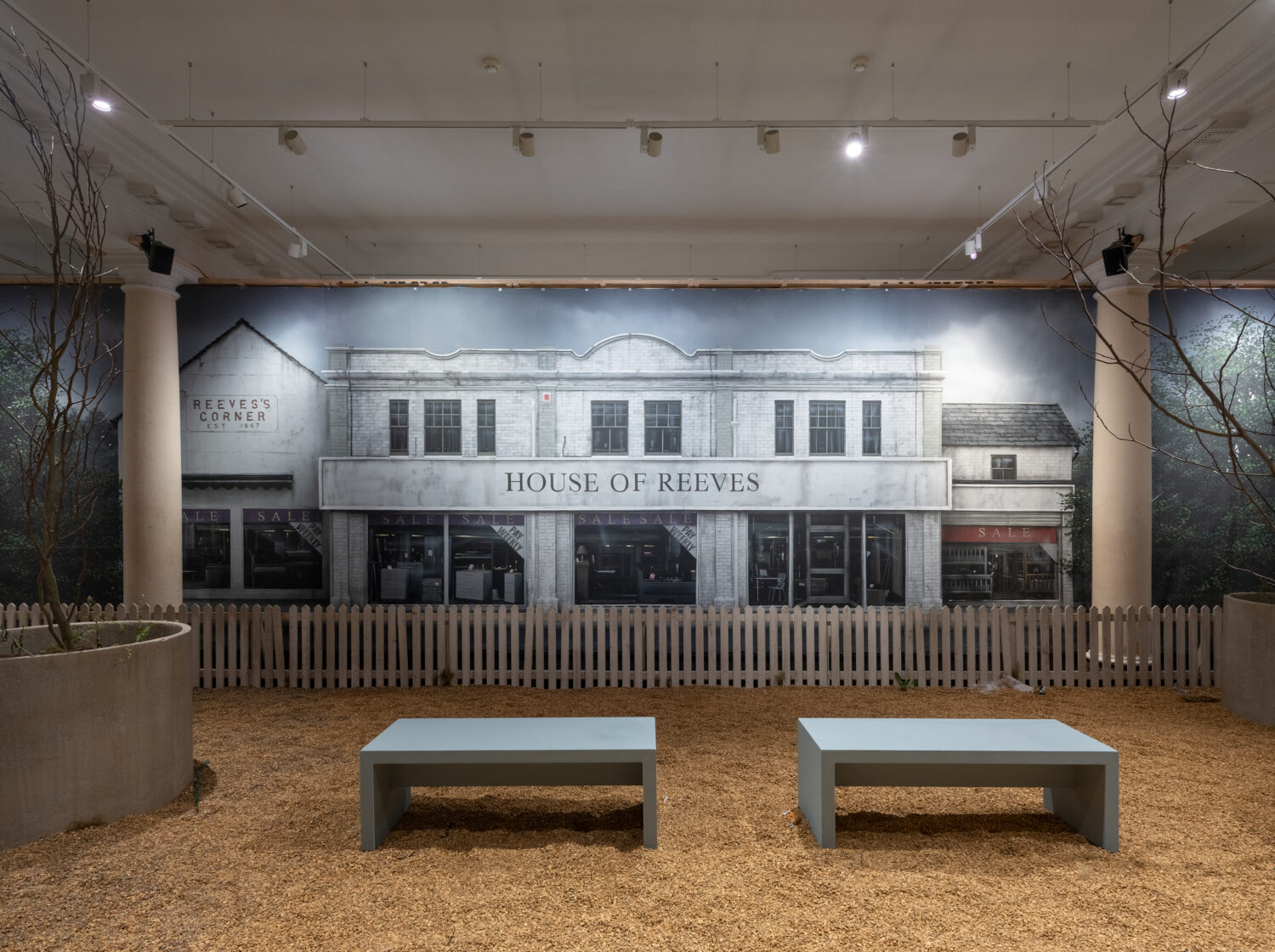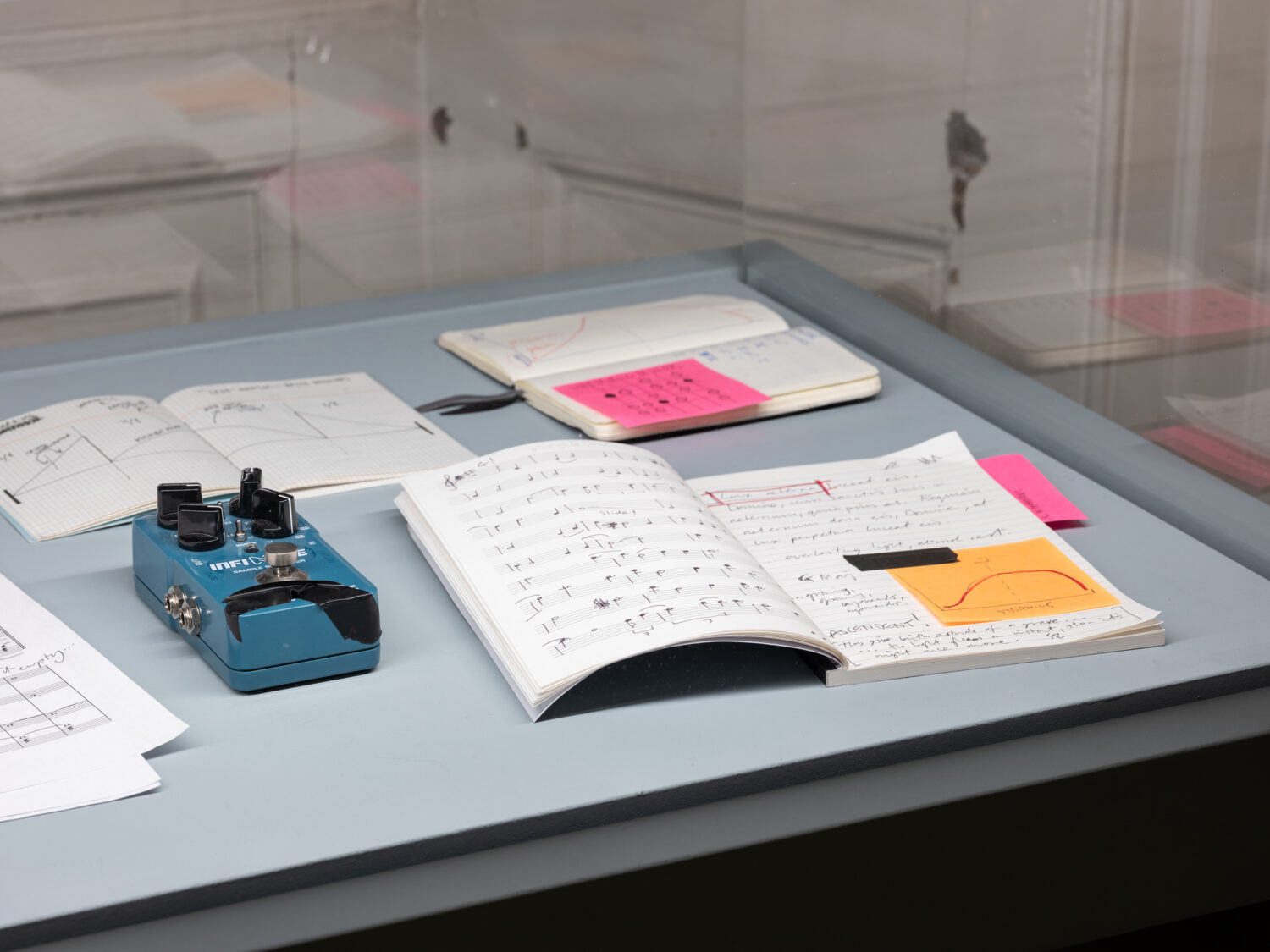Imran Perretta Reflects on “One of the Most Contested Patches of Earth in London”
By Keshav AnandLondon-based multidisciplinary artist Imran Perretta works across moving-image, sound, performance and poetry, probing topics from biopower and marginality to the construction and deconstruction of cultural histories through his practice. The artist’s latest commission, A Riot in Three Acts — on view now and running until 10 November 2024 at Somerset House Studios — reflects on the narratives of our urban spaces and the social inequality and racial violence that shape them.
The ambitious new multimedia installation marks the first major project since 2019 by the Somerset House Studios’ long-term resident. It utilises cinematic tropes and techniques, featuring an immersive film set and score. At its centre, the work explores civil uprisings sparked by systemic injustice experienced by marginalised communities.

In conversation with Something Curated’s Keshav Anand, Perretta discusses his practice in relation to activism: “As an artist, I have a longstanding interest in power, the structures that maintain it and how it is wielded by those that have a disproportionate amount of it. In this sense the work that I make is deeply political, but I don’t think I can claim it as activism. At best it contributes to a broader discourse around political issues, but grassroots activism is something else, something utterly vital and immediate that, in my opinion, should be kept separate from art practice. Activism is the work of citizens with a common cause, and I engage with it on those terms; as a member of a community, not as an artist.”
Researched and developed at Somerset House Studios over the course of two years, A Riot in Three Acts evolves from Perretta’s experience as a young person during the London Riots in 2011. The work opens with Perretta’s old Blackberry handset on which he received broadcast messages during the days of the London Riots. The burning imagery presented on the handset is emblematic of the five days of civil uprising in cities across the country, following the shooting of Mark Duggan, an unarmed Black man, by police in Tottenham on 4 August 2011. In the main space of the Lancaster Rooms, a film set consisting of a painted scenic backdrop and props replicates Reeves Corner in Croydon as it exists today.

Perretta elaborates on the work: “The riots that spread across the UK in the summer of 2011 were a huge flashpoint in my youth, and the fire that destroyed the furniture shop at Reeves Corner in Croydon became symbolic of that time. As a born and bred south Londoner, the whole incident still feels close to home. The riots felt so ethically and emotionally complex for me because I felt that the anger that fuelled the civil unrest: police brutality, structural racism and government austerity, was totally justified. However the destruction of a local, 100-year old family business felt like something else. It felt wrong.
In the 13 years since the fire, Reeves Corner has become a memorial ground of sorts, an area of disused, privately owned scrubland that has had no legacy to speak of since the fire that consumed it. And, after over a decade of purgatory, Reeves Corner seems to speak to so many of the same issues politically, ideologically and socio-economically that fuelled its destruction. In my mind it is one of the most contested patches of earth in London and I am continually fascinated by it.”

Central to A Riot in Three Acts is a newly commissioned score, A Requiem for the Dispossessed, composed by Perretta, arranged by William Newell and performed by Manchester Camerata. Drawing on the classical tradition of the requiem, a musical composition honouring the dead, the score serves as a sonic representation of a civil uprising and its aftermath, questioning who controls the narrative around how these actions are interpreted.
Perretta expands: “I have always composed and recorded the soundtracks for my films, but over lockdown I challenged myself to compose small passages of orchestral music untethered to a moving image and this unlocked something within my practice that I hadn’t expected. A Requiem for the Dispossessed is the legacy of these experiments. I became interested in how orchestral music and the classical requiem specifically, can trace a narrative arc in a similar way to film, so it somehow felt right to begin to reckon with the riots of 2011 through writing a new suite of music for a string quartet.

I settled into a writing process in my studio that emerged from improvising on the guitar then transcribing the recordings and composing the harmony using MIDI on the computer. I would send these compositions to the amazing arranger and violinist I work with, William Newell, to work his magic on the arrangements. We would then workshop the music during live sessions with players from the Manchester Camerata orchestra and tweak the arrangements together with the players. Once we had the music where we wanted it, we were ready to record.”
Perretta adds: “It has always felt imperative to me to work with institutions to create opportunities for as many people as possible to encounter the work and respond to it, regardless of their background. For A Riot in Three Acts, Somerset House and the curator of the exhibition, Rahila Haque, have created an inclusive and wide-ranging public programme around the exhibition that encompasses live orchestral performances, improvised music workshops for young people and panel discussions with activist organisations from Croydon and beyond. The hope is that bringing the work back to the community in different forms can go some way to creating a positive conversation around the complex issues that are represented in the work.”
Coinciding with the exhibition, Perretta hosts an episode of the Somerset House podcast series The Process, which is available to listen to via Channel.
Feature image: Imran Perretta: A Riot in Three Acts at Somerset House Studios. Photo: Josef Konczak